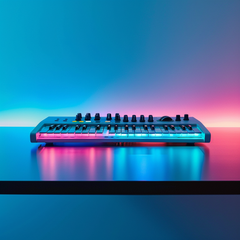Step-by-step: How to find the perfect samples for your tech house track
Finding the perfect samples is a critical part of crafting a killer Tech House track. With the genre’s emphasis on groove, rhythm, and atmosphere, each sample needs to fit perfectly within your mix. But with thousands of options, how do you find the ones that stand out? In this step-by-step guide, we’ll walk you through a systematic process to discover and select the best samples for your Tech House productions.
Step 1: Define Your Track’s Vision
Before diving into your sample library, take a moment to outline your track’s vibe. Is it dark and hypnotic, upbeat and funky, or minimal and atmospheric? Knowing the energy and mood you want to convey will help you filter your choices.
Key Considerations:
- Mood: Is your track more club-focused or experimental?
- Tempo: Most Tech House tracks are between 120-128 BPM, so focus on samples that match or can be adjusted easily.
- Style: Decide if you want traditional Tech House elements (e.g., driving basslines, crisp hi-hats) or something more unique.
Step 2: Start with the Drums
Drums are the backbone of Tech House. Begin by finding a solid kick drum that lays the foundation for your groove. Then, add complementary percussive elements.
How to Choose Drum Samples:
-
Kick Drum:
- Look for a punchy kick with a tight low-end that doesn’t muddy your mix.
- Test it against a basic bassline to ensure compatibility.
-
Hi-Hats:
- Choose sharp, crisp hi-hats to add groove and rhythm.
- Experiment with both closed and open hi-hats for variation.
-
Claps and Snares:
- Pick claps or snares with a snappy attack that sits well with the kick.
- Layer multiple samples to create a unique sound.
Pro Tip:
Start with pre-made drum loops to establish the groove, then replace or layer individual hits to make the loop your own.
Step 3: Find the Perfect Bassline
The bassline is the driving force of Tech House. It needs to lock in with your kick and add movement to the track.
How to Choose Bass Samples:
- Look for bass loops or one-shots with a deep, rolling quality.
- Ensure the bassline is in the same key as your track.
- Test its groove by playing it alongside your drums.
Pro Tip: Use pitch-shifting or envelope modulation to adjust bass samples and create variations.
Step 4: Add Percussion for Groove
Percussion is what gives Tech House its signature swing and energy. Adding subtle rhythmic layers can make your track come alive.
How to Choose Percussion Samples:
- Use shakers, bongos, or congas to add swing and shuffle.
- Layer rhythmic one-shots like rimshots or tambourines to enhance the groove.
- Experiment with loops and break them apart to use individual hits.
Pro Tip: Use delay and reverb to create space and texture for your percussion elements.
Step 5: Enhance with Atmospheric Elements
Atmospheric samples can transform a basic track into a captivating experience.
How to Choose Atmospheric Samples:
- Look for pads, textures, or ambient loops that add depth.
- Use field recordings or vocal chops for a unique touch.
- Layer subtle sounds to fill out the mix without overcrowding it.
Pro Tip: Add sidechain compression to your atmospheric layers to keep them dynamic and tied to the rhythm.
Step 6: Test for Compatibility
Even the best samples can clash if they don’t fit together. Test each sample in the context of your track to ensure compatibility.
What to Check:
- Key and Pitch: Ensure all melodic samples are in the same key.
- Frequency Range: Avoid too much overlap in similar frequency ranges.
- Groove Fit: Make sure every sample contributes to the groove and doesn’t disrupt it.
Pro Tip: Use EQ to carve out space for each sample in the mix.
Step 7: Process and Tweak
Raw samples rarely fit perfectly without some processing. Use effects and tools to tweak each sample to your liking.
Processing Techniques:
- EQ: Cut unnecessary frequencies to create space in the mix.
- Compression: Glue your drums and bass together for a tighter sound.
- Reverb/Delay: Add depth and atmosphere to melodic or percussive elements.
- Automation: Use volume, pan, and filter automation to keep your track dynamic.
Step 8: Use Sample Packs Strategically
High-quality sample packs tailored to Tech House can save you time and provide inspiration. Look for packs that include a mix of one-shots, loops, and atmospheres to cover all your needs.
Pro Tip: Combine samples from multiple packs to avoid sounding like other producers who use the same collections.
Step 9: Create Variations
To keep your track interesting, use variations of your samples throughout. This can include pitching a vocal loop, reversing a percussion hit, or adding new atmospheric layers in the breakdown.
Pro Tip: Use automation to create subtle changes in your samples over time, keeping the listener engaged.
Step 10: Trust Your Ears
At the end of the day, trust your instincts. If a sample feels right, it probably is. Don’t overthink it—focus on building a cohesive and dynamic track.
Final Thoughts
Finding the perfect samples for your Tech House track doesn’t have to be overwhelming. By following these steps, you’ll streamline your workflow and choose samples that fit seamlessly into your production. Whether you’re sourcing from curated sample packs or experimenting with unique sounds, the key is to focus on compatibility, creativity, and groove.









